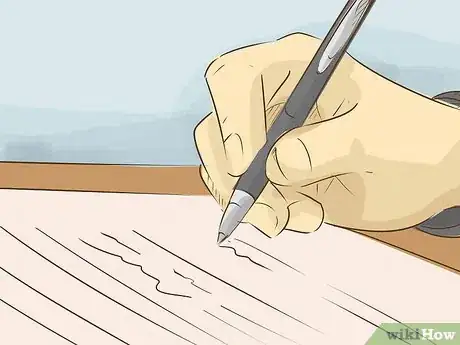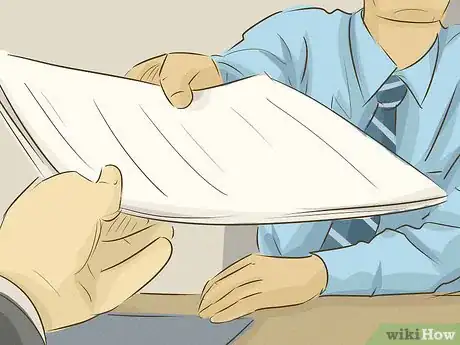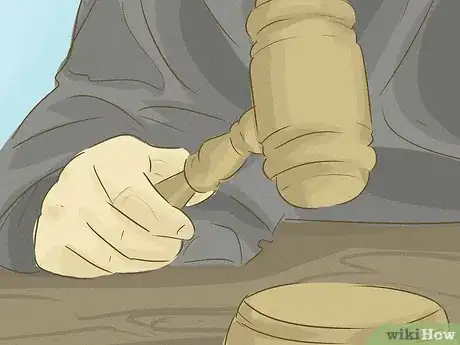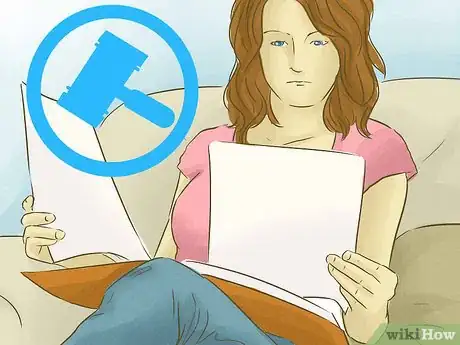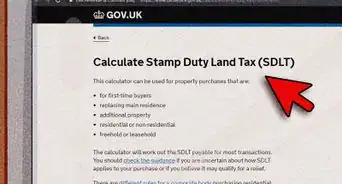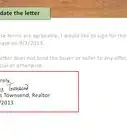This article was co-authored by Clinton M. Sandvick, JD, PhD. Clinton M. Sandvick worked as a civil litigator in California for over 7 years. He received his JD from the University of Wisconsin-Madison in 1998 and his PhD in American History from the University of Oregon in 2013.
This article has been viewed 36,268 times.
In many communities around the world, individuals or businesses that want to change a property that they own must obtain a zoning permit. Homeowners will often need a zoning permit to build additional structures on their properties, and in some cases, a zoning permit is required for something as small as a garden shed. Businesses might also need zoning permits to change the way they use a specific property. Whether your project is big or small, the general procedure to obtain a zoning permit is fairly consistent.
Steps
Reviewing your Current Zoning Provisions
-
1Study local zoning ordinances for your community. In most places, the issue of zoning is a local issue, rather than statewide or nationwide. You will want to visit your city hall or town hall to get information. Your city or town probably has a set of rules known as the local zoning ordinances, zoning regulations, zoning code, or something similar. Speak with someone at town hall and get a copy of these regulations.[1]
- Check online for many documents. As more and more communities have become tech-savvy, you may be able to search for your community’s zoning ordinances online. The City of Detroit, for example, posts everything including the latest Zoning Ordinance, application forms you will need, and copies of local zoning maps.[2]
-
2Review with an attorney. Applying for a zoning permit is not usually a very difficult process. Local zoning ordinances are usually written so that any resident of the community should be able to read and follow them. However, depending on the scale of the project you propose, you may need legal help. If your project is large or complicated and has several different parts to it, a lawyer can help you organize and understand all the requirements.Advertisement
-
3Talk to the director of public works. Most cities or towns will have a department of public works that controls this sort of planning and building. It may help your building project to plan a meeting with the director. The director should be able to help you play your application, review the information that you need, and decide if there are better ways for you to proceed.
- As an example, the city of Key Biscayne, Florida, has a website for the Department of Building, Planning, Zoning and Public Works. Contact information is provided for all the staff of that department. In particular, one person is identified as the Zoning Plan Reviewer.
- For simple, individual questions, you may be able to get answers you need with just a phone call. But if you need more help, or if you would like to review your overall project, the director of public works should be able to meet with you.
-
4Decide what type of zoning you need for the project you anticipate. After you review your town’s zoning plan, you will get an understanding for the way the zoning laws are arranged. This should help you figure out what permission you need for the project you anticipate. For example, building a permanent tool shed in your own backyard will require a different level of permission than establishing a business in a residential neighborhood. Compare your project to the various permissions that are granted, and figure out your need.
- For example, the town of North Brunswick, New Jersey, has an application form that includes a long list of different projects. Each project has a separate fee identified, as well as a space for indicating whether the area is zoned residential, non-residential or commercial.[3]
Gathering Important Information
-
1Obtain a copy of the application form. Beyond understanding the zoning laws themselves, you will need to begin with a copy of the application form for the zoning relief that you need. In some communities, you will need a zoning permit for any type of building that you wish to do.[4] Other areas will differentiate between the terms “zoning” and “building.” The term “zoning” refers to the use of buildings and land in certain geographical regions, while a “building” permit applies specifically to construction of various types. Determine which you need and request it through your City Hall’s zoning office.
-
2Collect ground plans, blueprints or other documents. Usually, part of your zoning request is going to require you to demonstrate the impact that your proposal will have on the surrounding area. Part of doing this includes demonstrating how the area is zoned already. You will need to get copies of maps or ground plans from the city zoning office.[5]
- The documents you need are usually part of the public record, so you should have free access to them. You may have to pay a copying fee, depending on what you need.
-
3Collect details of the work that you propose. Part of the application for a zoning variance usually requires that you submit details of the project that you propose. This usually must be very detailed. Make sure you read the application instructions very carefully and comply with the instructions meticulously. For example, the zoning variance instructions for the Town of Pittsford, NY, requires all of the following as part of the application:[6]
- an instrument survey of the area
- a scale drawing of any building additions that you propose, with marked measurements
- architectural elevations
- photographs
- maps
- landscape plans.
-
4Be sure you have the owner’s permission. If you are not the owner of the property for which you are requesting a variance or zoning permit, you will usually need to get the owner’s permission. If the owner is an individual, this may be as easy as speaking to that person. On the other hand, if you are proposing a project on a piece of public or commercial land, you may need to investigate the property’s ownership. You need to plan ahead and account for some extra time to be sure you have permission.[7]
Applying for a New Zoning Permit
-
1Complete the paperwork. Undoubtedly, the process for a zoning permit will begin with an application form. Be sure you have the right form for your project, and fill it out completely. Make sure that you have all the additional paperwork and materials that are supposed to accompany the application.
- Many towns will provide a “checklist” so you can make sure you have everything you need for your application.[8]
-
2Submit the completed paperwork. When you have all the supporting material, including permissions and approvals of any required other individuals, gather your application together for filing.
- Pay attention to which office to submit to. Sometimes you may just submit your application to the main clerk’s office at city hall, but sometimes you will be directed to submit the application directly to the zoning board or zoning director, or some other individual or office. To make sure your application does not get misplaced, send it to the correct office.
- Make sure you know how many copies to submit. Sometimes you may just need to file the one application. But some communities will require additional copies. In Pittsfield, NY, for example, you need to file 12 copies of your application and all attachments.[9]
-
3Include your filing fee, if any. Find out as part of your application process whether the community requires the payment of a fee for a zoning permit. Check with the clerk or someone in the zoning office to find out how you can pay this, and to whom any check should be written.
- Make sure you pay the appropriate fee for the type of proposal you are submitting. Different types of permits will often have different filing fees.[10]
-
4Attend a hearing, if required. If you are lucky, your application may simply be accepted, reviewed and approved without a hearing. But more often, you will probably need to attend a public hearing of the zoning board to address your application. When you file your application, you should check with the city clerk or someone in the zoning office to find out the procedure for such hearings. The scheduling of a meeting may be automatic, or it may be your responsibility to make sure that your application is scheduled for hearing.
- For example, in Little Compton, Rhode Island, the Zoning Board meets the third Wednesday of each month to consider applications.
- The city of Neillsville, Wisconsin, contains space on its application form for the Zoning Board to meet and record its action on any proposal.
-
5Treat the hearing seriously and professionally. When you attend a zoning hearing, you need to be thoroughly prepared. You should have extra copies of your application package and all supporting materials. It may help if you have enlarged exhibits of the area map and your proposed project, to explain your application. You can never be sure if the meeting is a mere formality, or if the members of the zoning board are going to ask you very detailed questions. Try to be prepared for anything.
- If possible, depending on the area where you live, you may want to speak with individual members of the zoning board before the meeting. This can help you get a sense of the level of acceptance you can expect when you attend the hearing. Many communities list their zoning board members on their websites.[11]
References
- ↑ http://www.ci.berkeley.ca.us/Planning_and_Development/Land_Use_Division/Difference_between_a_Zoning_Permit_and_a_Building_Permit.aspx
- ↑ http://www.detroitmi.gov/How-Do-I/Apply-for-Permits/Zoning-Permit-Forms
- ↑ https://northbrunswicknj.gov/wp-content/uploads/2021/02/ZONING-PERMIT-APPLICATION-FEB-2021.pdf
- ↑ https://northbrunswicknj.gov/wp-content/uploads/2021/02/ZONING-PERMIT-APPLICATION-FEB-2021.pdf
- ↑ http://www.townofpittsford.org/files/forms/area_variance.pdf
- ↑ http://www.townofpittsford.org/files/forms/area_variance.pdf
- ↑ http://www.townofpittsford.org/files/forms/area_variance.pdf
- ↑ http://www.townofpittsford.org/files/forms/area_variance.pdf
- ↑ http://www.townofpittsford.org/files/forms/area_variance.pdf








